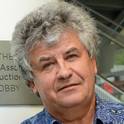- Surface waves,
- Wave breaking,
- Wave-induced turbulence,
- Vertical mixing,
- Mixed layer,
- Ekman currents
We investigate the turbulence induced by wave-breaking at the ocean surface. Two recent models use a mechanism of direct depth injection of turbulent kinetic energy (TKE) by breaking waves. Those models aim to reproduce the near-surface mean and turbulent properties, in particular the TKE dissipation rates. Of critical importance are the injection depth of each breaking wave and the size distribution of those breaking waves. The models by Sullivan et al. (2007) and by Kudryavtsev et al. (2008) have very different parameterizations, and those differences are reviewed here and compared to available observations. Using realistic parameterizations in these models leads to TKE injections too shallow to compare to observations, in particular for developed seas. The near-surface turbulence is thus still not well understood to the zeroth order. For instance, whether developed seas produce deeper or shallower mixing than young seas is neither well understood nor well modelled. Additional dedicated measurements as well as investigations of breaking non-breaking wave interactions are needed.
Available at: http://works.bepress.com/alexander-soloviev/5/

©2012 Elsevier Ltd.